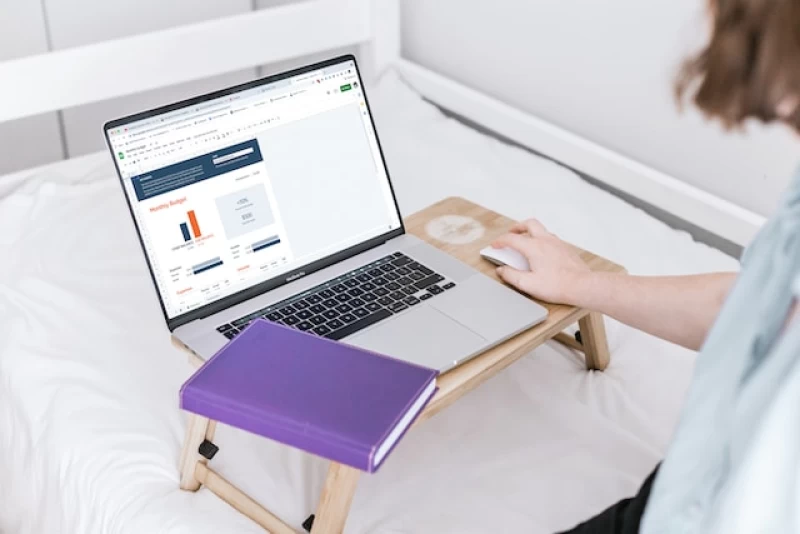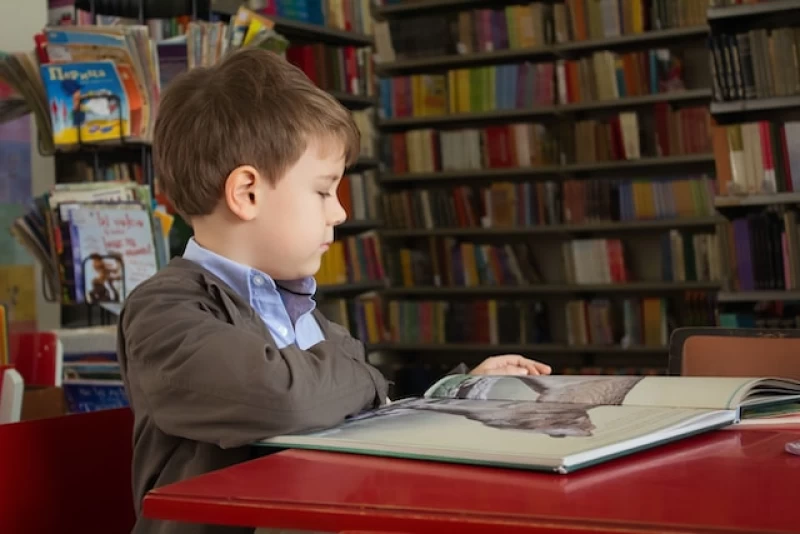How much school fees should parents expect to pay: A guide to understanding tuition fees and choosing the right school for your finances

As a parent, one of the greatest decisions that will impact your child's future and most significant expenses you'll have to budget for is your child's education. The cost of tuition fees, books, uniforms and other expenses can add up quickly, making it crucial to plan carefully to avoid any financial strain.
‘From a school’s point of view, they are trying to provide in every capacity the best education for each child, within its values,’ senior school adviser Sam Sapuppo says.
‘There’s always going to be a challenge to do that as cost-effectively to parents as possible. They’re trying to meet next year’s needs while planning for the future.’
In this article, we'll discuss how much school fees you can expect to pay in Australia, how tuition fees are determined and how to pick the right school for your financial circumstances.
How much school fees should parents expect to pay?
The answer to 'How much are public school fees in Australia' is they are typically free for primary and secondary schools. However, you may need to pay for additional expenses such as uniforms, stationery, excursions levy and voluntary contributions.

As for private school fees, the cost varies widely depending on:
- the type of school (government school, independent school, Catholic school, etc)
- location
- level of education.
Sapuppo says as a very general rule, annual school fees can fall into the following categories:
- low-fee paying schools (typically Christian and Islamic schools): $2,000–$8,000
- Catholic diocesan high schools and Lutheran schools: $6,000–$16,000
- private schools : $12,000–$30,000
- well-established private schools: $25,000–$40,000.
It's essential to keep in mind that these are a generalisation, but they do indicate the average grouping of private school fees and that the cost can vary significantly depending on various factors. It's crucial to research the specific costs of the schools you're interested in and budget accordingly.
Sapuppo explains on fee increases: ‘If we are to take a historical view and the current inflationary trends into account, your child’s [private] school fees will likely compound on today’s rate by about 4–6 per cent each year.
‘There’s also an additional 10–15 per cent of fees on top of your school fees that you need to consider. For example, if you pay $40,000 in school fees each year, you can expect at least another $4,000 in additional fees for things like school camps, sport and music.

‘A school that needs to build a new building may also levy parents an additional $2,000 [building levy], and it will not be included — or stay — in the school fee.
‘That’s why it’s a multi-year expense that you’re committing to.’
Sapuppo says that while a parent’s excitement over school prestige or the prospect of sending their child to a school down the road, or the school that their friend’s children go to, will wear off, parents’ planned commitment over 10–15 years to the school may not.
‘I’d advise that you do a stress test on your child’s school fees, just as you would for your mortgage. After all, you’d want your child to go to that school for their whole schooling duration,’ he says.
How are private school fees determined?
Considering that tuition fees are determined based on factors including school location, level of education and the programs offered, there are other costs to take into account.
Those include:
- getting the best teachers and staff and teacher salaries (where there is an increasing pressure in this area)
- rising costs in facilities maintenance and upgrades
- teaching supplies
- having the kind of modern technologies expected from parents.

Sapuppo reassures that no school will continue to increase tuition fees for the sake of positioning themselves.
‘As schools get older, the maintenance costs are getting higher,’ he says. ‘One such school will spend more on maintaining existing buildings than planning a new campus in the suburbs.
‘Therefore, you need to think carefully about the school price that you can afford –– if not for the next four, six, 12 or 14 years –– that does not put a stress on the family.
‘If you’re miserable, your child would be miserable, and your relationship with the school would not be good –– your child loses out in the middle.’
How to pick the right school for your child and your finances
When choosing a school, it's essential to consider your finances carefully.
‘You don’t get better [school] values by paying more. Parents are starting to realise that,’ Sapuppo says.
‘Instead, do your research, find out what that school’s alumni have gone on to and you’ll find whether their values match your values. Examine the values that you want for your child and don’t rely on school marketing.’

Here are some tips to help you get started.
Research the costs
Research the specific costs of the schools you're interested in, including:
- tuition fees
- required accommodation (e.g. boarding fees)
- books and supplies
- miscellaneous expenses such as excursion fees (e.g. a $100 levy for the year in some cases), school uniforms, sport and music.
This will give you a better idea of the overall cost of education and help you budget accordingly.
Remember it’s the extra, little fees that can quickly accumulate.
Consider the school location
It is important to consider the location of the school when estimating school fees in Australia. Private schools located in urban areas tend to charge higher fees compared to those in rural areas. This is because of the high cost of living and operating expenses in urban areas.

Additionally, private schools located in more affluent neighbourhoods in Australia tend to charge higher fees. However, there may be exceptions where some private schools in urban areas charge lower fees due to government subsidies or other factors.
Look for scholarship or financial aid opportunities
Many schools and organisations in Australia offer scholarships or financial aid opportunities for families who may not be able to afford the full tuition and those who are facing financial difficulties. It is important to research and enquire about these opportunities when considering a school for your child.
Scholarship programs
Scholarships and grants are not only offered by the schools you're interested in, but also other organisations. These programs may be based on:
- your child’s academic performance
- financial need
- special circumstances or disadvantages
- music performance.

Financial aid programs
Every state government has its own financial aid programs. (Note that these aids should not be relied upon for choosing a school that fits your child and finances –– they may be helpful in times of financial strain.)
To get started:
- research the financial aid programs offered by the schools you're interested in.
- determine if you're eligible.
- speak to the school or organisation involved
- apply for these programs early to increase your chances of receiving assistance.
Victoria
The Victorian Government offers financial help for families through the State Schools’ Relief, which provides assistance to disadvantaged students with essential educational items such as uniforms and shoes.
The Camps, Sports and Excursions Fund, on the other hand, covers the costs of school trips, camps and sporting activities for children of eligible families.
New South Wales
You may be eligible for the Active Kids program, where a $100 voucher per child per year is up for grabs to help cover the costs of registration and participation in sport and physical activity.
Queensland
If you’re a parent of secondary school age students who go to an approved state school, non-state school or special school, you may be eligible for the Textbook and Resource Allowance program. Administered by the Queensland Government, it helps eligible families cover the costs of textbooks and learning resources for their children.
There are also transport assistance, Living Away from Home Allowances scheme and more.
South Australia
South Australia’s School Card scheme offers a range of discounts and concessions on school-related expenses such as uniforms, books and excursions.
Australia-wide
Another program is the federal government’s Education Tax Refund, which allows eligible families to claim tax deductions on education-related expenses.
Payment plans
Some schools may also have tuition instalment plans that allow you to pay the fees in smaller amounts over a period of time. Scholarships, bursaries and payment plans can together help make a more expensive school affordable.
Consider the long-term benefits of the school
While the cost of school fees is an important factor, remember to consider the long-term benefits of the school. This includes:
- the academic standards of the school
- the teaching quality
- extracurricular activities
- opportunities for personal growth and development
- friendship groups that often last a lifetime.
A good school can provide your child with a solid foundation for their future, which can make the investment in school fees worthwhile.

Choose the right fit for your child
Walking the school with your child and seeing how they react can be a great way to gauge whether the school is the right fit for them, according to Sapuppo.
‘If your child seems comfortable and happy, then that's a good sign. Because while academic results are important, they're not the only factor to consider,’ he says.
‘If your child has a particular interest or passion, look for schools that can support and nurture that.
‘Remember, the best school isn't necessarily the one with the best reputation or academic results –– it's the one that's the right fit for your child.
‘As a parent, you have the power to be their mentor and guide them towards a happy and fulfilling future.’
In conclusion, it is important to consider your finances and education costs when selecting a school for your child. Private school fees can vary depending on several factors, from the school location to the facilities offered. However, it is also important to look beyond the cost and consider the long-term benefits of the school. With proper research and planning, you can find the right school that fits your financial condition and provides your child with a quality education that sets them up for future success.



